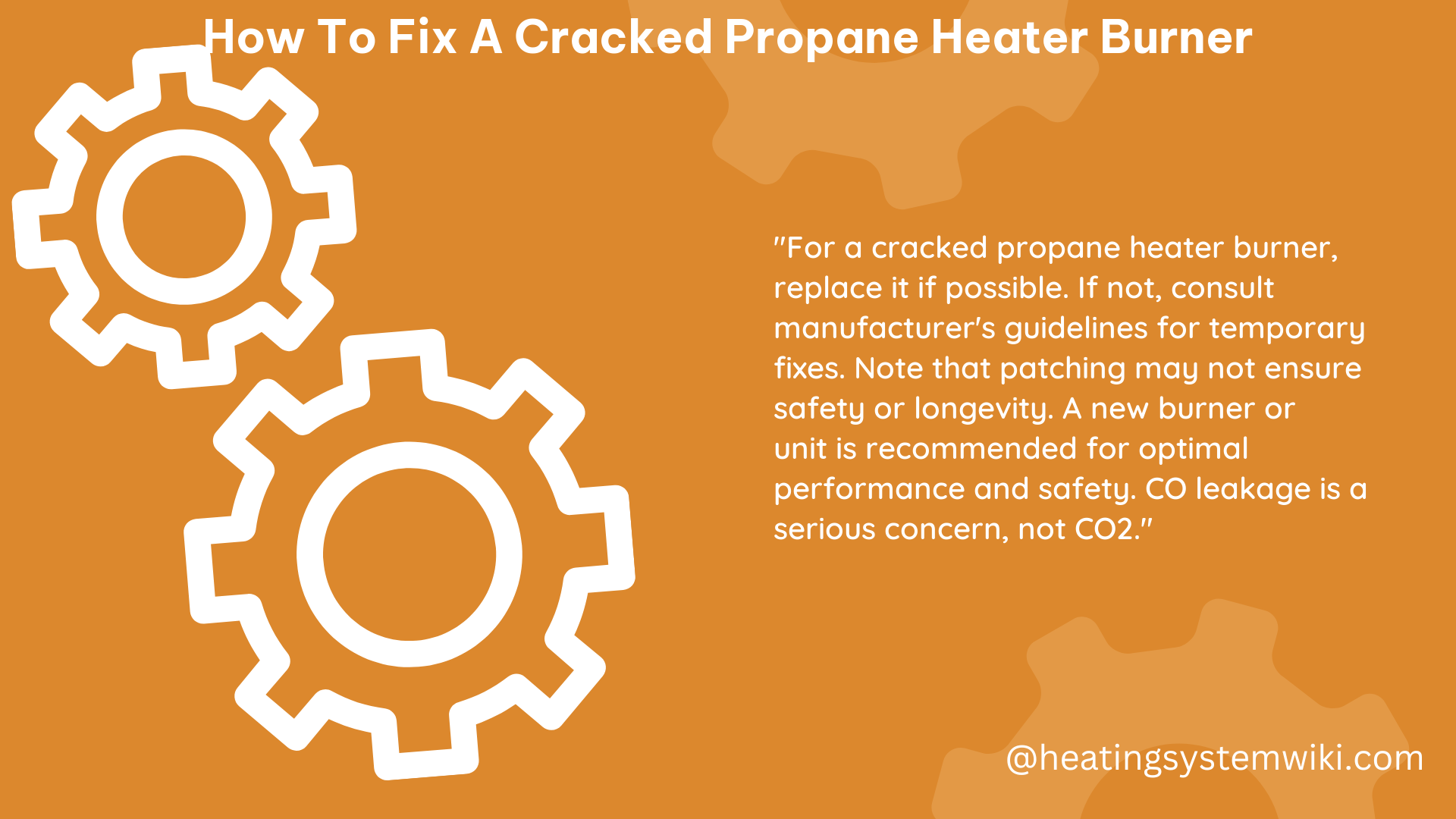A cracked propane heater burner is a serious issue that requires immediate attention. While a temporary fix may seem like a quick solution, it is crucial to understand that a crack or hole in the heat exchanger is considered a failed part and needs to be replaced. Patching it with products like JB Weld or Rutland stove and gasket cement may not ensure safety and could put lives at risk due to potential carbon monoxide leakage.
Inspecting the Crack
Before attempting any repairs, it is essential to thoroughly inspect the crack. Identify the location and size of the crack. If the crack is behind the gasket of the burner plate or inside the furnace, it might be less of an immediate concern, but it still needs attention.
Measure the length and width of the crack using a digital caliper or a ruler with a precision of at least 0.1 mm. This information will be crucial when selecting the appropriate sealant and determining the extent of the damage.
Turning Off the Gas Supply

Safety should be the top priority when working on a propane heater. Before starting any repair, make sure to turn off the gas supply to the heater. This can typically be done by locating the gas shut-off valve, which is usually located near the heater or the gas meter, and turning it clockwise to the closed position.
Cleaning the Cracked Area
Use a wire brush or fine-grit sandpaper (80-120 grit) to clean the cracked area thoroughly. Remove any rust, debris, or soot that may have accumulated around the crack. This will ensure that the sealant adheres properly to the surface.
After cleaning, wipe the area with a clean, lint-free cloth to remove any remaining particles. It is essential to have a clean, dry surface for the sealant to bond effectively.
Applying the Sealant
When selecting a sealant, choose a high-temperature, heat-resistant product specifically designed for repairing cracks in metal surfaces. Two popular options are JB Weld and Rutland stove and gasket cement.
JB Weld is a two-part epoxy adhesive that can withstand temperatures up to 1,000°F (538°C). It has a tensile strength of 5,000 psi (34.5 MPa) and a compressive strength of 10,000 psi (68.9 MPa), making it a durable choice for repairing cracks in propane heater burners.
Rutland stove and gasket cement is another suitable option. It can withstand temperatures up to 2,000°F (1,093°C) and is specifically formulated for sealing cracks and gaps in stoves, furnaces, and other high-heat appliances.
Follow the manufacturer’s instructions carefully when applying the sealant. This typically involves mixing the two components, applying the sealant to the cracked area, and smoothing it out with a putty knife or spatula.
Curing the Sealant
Allow the sealant to cure for the recommended time, which can range from 4 to 24 hours, depending on the product. During this time, do not operate the propane heater, as the curing process requires the sealant to harden and form a strong bond.
Refer to the manufacturer’s instructions for the specific curing time and any additional steps, such as applying a second layer of sealant or allowing the first layer to fully cure before reapplying.
Inspecting and Reapplying the Sealant
Regularly inspect the repaired area to ensure the sealant is still intact and the crack has not worsened. If you notice any signs of deterioration, such as cracks, peeling, or gaps, reapply the sealant following the same process.
It is important to note that a temporary fix using sealants is not a long-term solution. The heat exchanger or the entire unit should be replaced as soon as possible to ensure the safety and efficiency of the propane heater.
Replacement Considerations
If the crack in the propane heater burner is extensive or the sealant fails to provide a reliable long-term solution, the heat exchanger will need to be replaced. This is a more complex and potentially costly repair that should be performed by a qualified HVAC technician.
When replacing the heat exchanger, consider the following factors:
-
Material: Heat exchangers are typically made of steel or cast iron, which are designed to withstand high temperatures and pressures. Ensure that the replacement part is compatible with your specific propane heater model.
-
Dimensions: Measure the dimensions of the existing heat exchanger, including the length, width, and thickness, to ensure the replacement part fits properly.
-
Compatibility: Verify that the replacement heat exchanger is compatible with your propane heater’s make, model, and gas type (natural gas or propane).
-
Safety Certifications: Look for a heat exchanger that is certified by recognized safety organizations, such as the American National Standards Institute (ANSI) or the Canadian Standards Association (CSA), to ensure it meets safety standards.
-
Warranty: Consider the warranty coverage provided by the manufacturer, as this can help protect your investment in the long run.
Remember, attempting to repair or replace a heat exchanger without proper training and expertise can be dangerous and may void the warranty of your propane heater. It is always recommended to consult a qualified HVAC technician for any major repairs or replacements.
Conclusion
Fixing a cracked propane heater burner requires a careful and thorough approach. While a temporary fix using sealants may seem like a quick solution, it is essential to understand the risks and limitations of this method. Regularly inspecting the repair and being prepared to replace the heat exchanger or the entire unit are crucial steps to ensure the safety and efficiency of your propane heater.
By following the guidelines outlined in this comprehensive guide, you can effectively address a cracked propane heater burner and keep your home warm and comfortable throughout the colder months.
